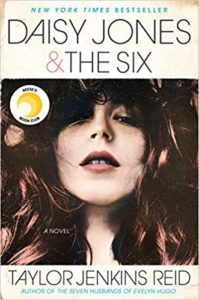 The Dictionary of Lost Words by Pip Williams
The Dictionary of Lost Words by Pip Williams Published by Ballantine Books on March 31, 2020
Genres: Historical Fiction
Pages: 400
Format: E-Book, eBook
Source: Library
Buy on Amazon, Buy on Bookshop
This post contains affiliate links you can use to purchase the book. If you buy the book using that link, I will receive a small commission from the sale.
Goodreads
In this remarkable debut based on actual events, as a team of male scholars compiles the first Oxford English Dictionary, one of their daughters decides to collect the "objectionable" words they omit.
Esme is born into a world of words. Motherless and irrepressibly curious, she spends her childhood in the "Scriptorium," a garden shed in Oxford where her father and a team of dedicated lexicographers are collecting words for the very first Oxford English Dictionary. Young Esme's place is beneath the sorting table, unseen and unheard. One day a slip of paper containing the word "bondmaid" flutters to the floor. She rescues the slip, and when she learns that the word means slave-girl, she withholds it from the OED and begins to collect other words that have been discarded or neglected by the dictionary men.
As she grows up, Esme realizes that words and meanings relating to women's and common folks' experiences often go unrecorded. And so she begins in earnest to search out words for her own dictionary: The Dictionary of Lost Words. To do so she must leave the sheltered world of the university and venture out to meet the people whose words will fill those pages.
Set during the height of the women's suffrage movement with the Great War looming, The Dictionary of Lost Words reveals a lost narrative, hidden between the lines of a history written by men.
Based on actual events and combed from author Pip Williams's experience delving into the archives of the Oxford English Dictionary, this highly original novel is a delightful, lyrical, and deeply thought-provoking celebration of words and the power of language to shape the world.
This book was one of the most enjoyable I’ve read all year, and I highly recommend it to fans of historical fiction who also love words. I picked it up upon seeing Simon Winchester’s blurb:
“In the annals of lexicography, no more imaginative, delightful, charming, and clever book has yet been written.” —Simon Winchester, author of The Professor and the Madman: A Tale of Murder, Insanity, and the Making of the Oxford English Dictionary
High praise, considering The Professor and the Madman was one of the more interesting and enjoyable works of nonfiction I’ve read.
Some reviewers mention that this book takes a turn when characters start dying, but honestly, that’s what happens in life: as you age, you lose your parents and friends. It would be unnatural for Williams not to include this aspect of Esme’s story.
The novel was well written on top of telling an engaging story. I loved the characters’ meditations on words, and I enjoyed Esme’s efforts to collect words she feared the dictionary was not capturing.
In an interview in the back of the book, Williams said,
By the time I had finished the first draft of this novel, I had become acutely aware that the first edition of the Oxford English Dictionary was a flawed and gendered text. But it was also extraordinary, and far less flawed and gendered than it might have been in the hands of someone other than James Murray.
Williams’s admiration for Murray’s efforts to bring the dictionary to completion was palpable on every page, but even more than that, her admiration for the lesser-known individuals who contributed to the dictionary was spotlighted.
 Daisy Jones & The Six by
Daisy Jones & The Six by 